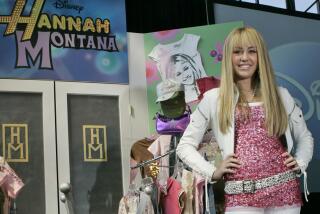Bob Iger’s redrawing of Disney continues
I’m assuming that the giant pillars of the Seven Dwarfs are still atop the Team Disney building, but hearing the news Tuesday that Oren Aviv has been ousted as studio production chief, I’m getting the feeling that everything else at Bob Iger’s Mouse House is up for grabs these days. Since Iger ousted studio chief Dick Cook and installed Rich Ross as his replacement in early October, Iger and the former Disney Channel president haven’t lost any time in reshaping the studio’s executive hierarchy.
Miramax chief Daniel Battsek got the ax first, followed by Disney Motion Picture Group chief Mark Zoradi, who was followed out the door by film marketing chief Jim Gallagher. In another surprise move, Disney home video chief Bob Chapek, who was viewed by some insiders as a midlevel bureaucrat, was made head of all film distribution, from theaters to VOD and home video, clearly with an eye on moving ahead with Iger’s cherished idea of shrinking the windows between theatrical release and various home video options.
In an even more unusual move, Iger announced in November that two other top Disney execs would suddenly be switching jobs, with theme parks chief James Rasulo becoming chief financial officer and Disney CFO Thomas Staggs taking control of the $12-billion theme park division. Now there is talk that one of the leading contenders to replace Aviv is Susette Hsiung, head of production at the Disney Channel, who has worked closely with Ross since coming over from a previous job at MTV Asia.
So what does this all mean?
First, it’s an incredibly clear sign that Iger is reinventing his studio without any real concern for industry tradition or what the town, much less the top creative talent at the studio, thinks about the new executive lineup. For years, Cook was able to run Disney with autonomy, keeping Iger and his new ideas about distribution and branding at bay. But now, as one industry pal said Tuesday morning after hearing the news of Aviv’s ouster, “it’s like the Huns are sacking the crusaders’ castle.” Anyone viewed as a Cook loyalist is being ushered out the door.
The changes are also a sign that Iger is moving ahead with his plans at turning Disney into a brand factory, with Pixar, Marvel, Jerry Bruckheimer and DreamWorks all on board as brand vehicles to provide movies that can be exploited by the Disney marketing and distribution machine. It’s why many industryites aren’t so surprised that Ross might hire a relative neophyte like Hsiung as head of production. With so many movies coming in from the brand vehicles, being head of production isn’t such a high-level gig, since there won’t be many original films for the production chief to oversee.
That, of course, is the big drawback to the Iger branding strategy. Branded movies have tons of global appeal. But they’re by nature expensive to make and market, which cuts into potential profits. If your studio is focused on branded entertainment, you’re never going to get the surprise hits (like last year’s “The Hangover,” “District 9” and “Taken”) that end up being huge boosts for a studio’s bottom line since they cost so little to make but have such a great return on investment.
Iger’s moves also mean that the boss wasn’t kidding when he publicly bashed the film division for its poor performance last year. And he had a point. After a long series of box-office disappointments, the studio is in need of new blood. The Bruckheimer-produced “G-Force,” released last July, was supposed to launch an action-oriented “Alvin and the Chipmunks”-style franchise. But the movie, which was virtually unwatchable, was an underperformer.
That goes double for Robert Zemeckis’ “A Christmas Carol,” which reportedly cost nearly $200 million, not to mention an additional $75 million or so in marketing expenses. The film made only $137 million in the U.S., along with $185 million more overseas. The studio’s Thanksgiving release, “Old Dogs,” a quasi-sequel to “Wild Hogs,” barely made a dent in the marketplace.
It’s no wonder that Aviv took the fall. As head of production, he had to answer for the films’ conception as well as their execution. And if the films shared any commonalities, it was a distinct lack of freshness and imagination. “Old Dogs” had an unbelievably creaky comedy formula, while “A Christmas Carol” was old-fashioned and plodding, raising the question of why it was set in Victorian England instead of a more modern milieu that would have allowed for a more imaginative retelling of a very familiar story.
There is still more change to come at the venerable studio, because Ross is hunting for a new marketing chief to handle the film releases (having apparently had little luck in finding a worthy candidate from outside the business). I’ve always believed that change is a healthful thing, especially in the movie business, which tends to be unusually insular in its ways. But change can also be disruptive, especially at a studio that has for so long functioned as a smoothly humming movie assembly line.
It may sound obvious, but it’s worth remembering that at Disney, the leading brand was always Disney. But when Bob Iger’s new Disney is finally in place, I suspect the studio is going to look like a very different place, with the Seven Dwarfs not only having to make room for new pillars representing Pixar, Marvel and DreamWorks but also make room for a new way of doing business.
patrick.goldstein@latimes .com
More to Read
The biggest entertainment stories
Get our big stories about Hollywood, film, television, music, arts, culture and more right in your inbox as soon as they publish.
You may occasionally receive promotional content from the Los Angeles Times.










